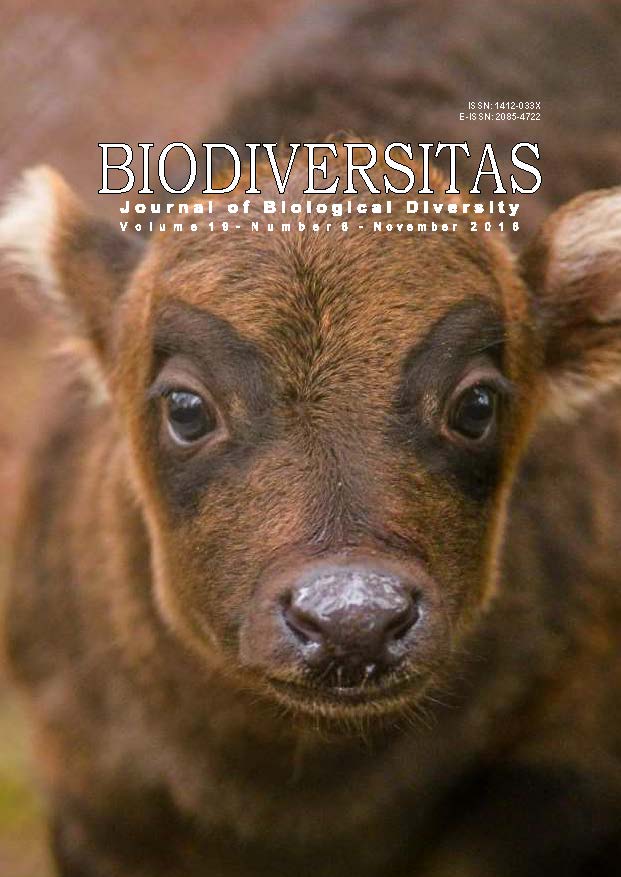Ethnobotany of banana plants (Musa x paradisiaca) of Palintang Hamlet, Cipanjalu Village, Bandung, West Java, Indonesia
##plugins.themes.bootstrap3.article.main##
Abstract
Iskandar J, Mubarokah M, Kusmoro J, Partasasmita R. 2018. Ethnobotany of banana plants (Musa x paradisiaca) of Palintang Hamlet, Cipanjalu Village, Bandung, West Java, Indonesia. Biodiversitas 19: 2059-2072. Rural people of West Java have traditionally farmed many varieties (landraces) of bananas (Musa x paradisca L) in the agroecosystem of homegardens and gardens. Because of the increasing human population, rapid rate of agricultural land conversion to other land uses, intensive penetration of market economy to rural areas, and introduction and selection in favor of banana landraces having good taste for culinary and high market price, some landraces of bananas have become rare, even locally extinct in rural areas. The main purpose of this study was to elucidate local knowledge of Palintang people on landraces, population, local farming management, and utilization of bananas. The mixed methods, qualitative and quantitative were applied in this study, while some techniques of collecting primary data, mainly observation, participant observation, semi-structured interview, structured interview, semi-quantitative population of banana plant were carried out. The results of study showed that 18 landraces of bananas have been recorded in Palintang hamlet. Local knowledge or traditional ecological knowledge of Palintang people on bananas have been predominantly obtained from individual personal experiences and from the parents and ancestors, inherited from generation to generation via oral communication. Most banana landraces cultivated by Palintang farmers have superior culinary aspect, particularly good taste, and high price. As a result, some landraces of bananas considered not having good taste and having low price have rarely been planted in the gardens. Banana trees have traditionally been cultivated by farmers of Palintang based on traditional ecological knowledge and which has been culturally embedded. There are 7 main stages of banana cultivation, namely preparation of banana suckers, land preparation, planting, caring, harvesting, post-harvesting management, and utilization of bananas for home consumption and sale through village middlemen and market. The banana cultivation has dramatically changed due to both ecosystem and rural community’s socio-cultural changes.
